Gutierrezia serotina, Late Snakeweed
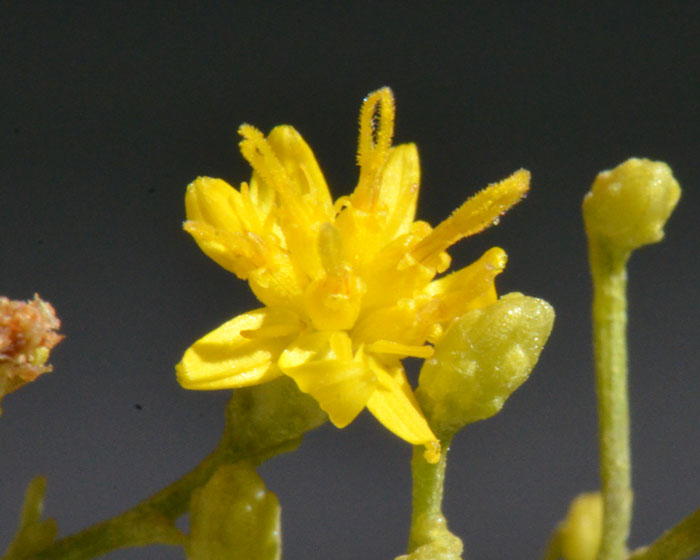
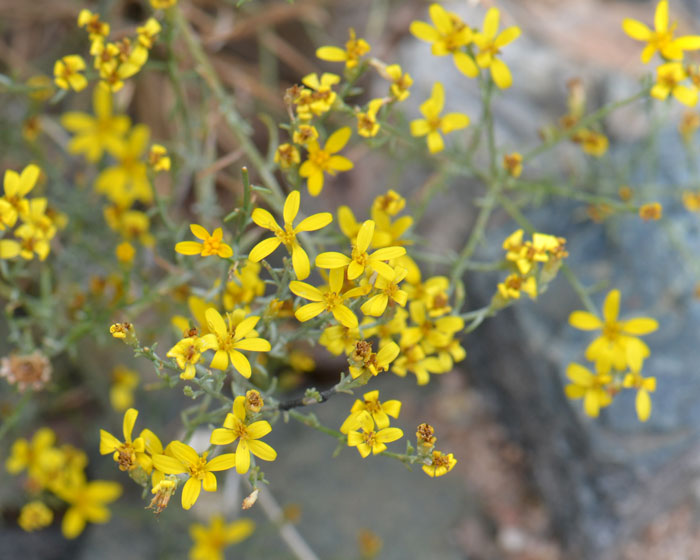
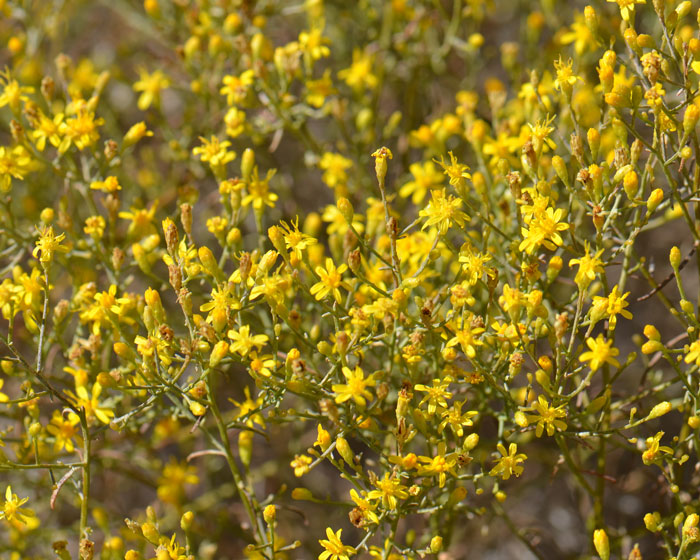
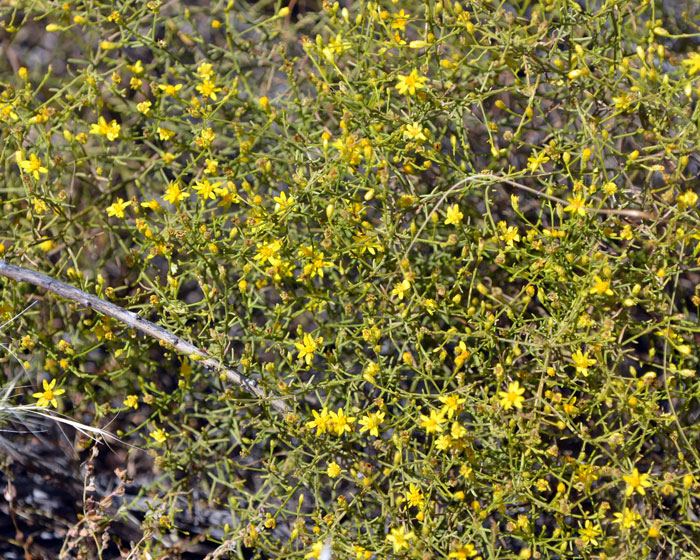
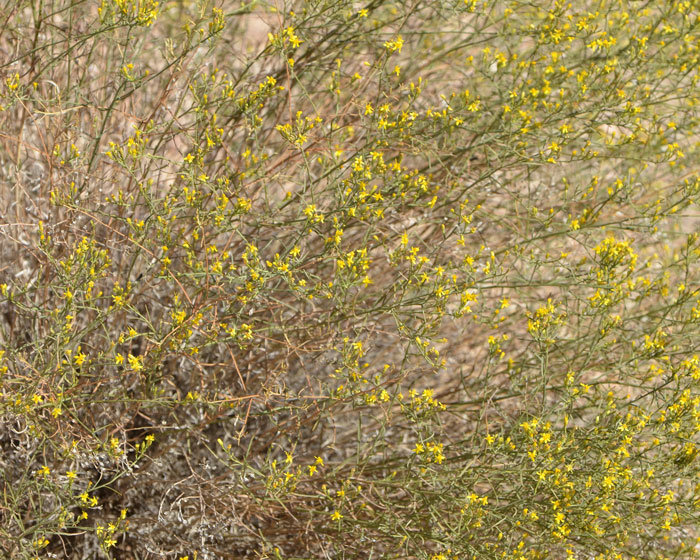
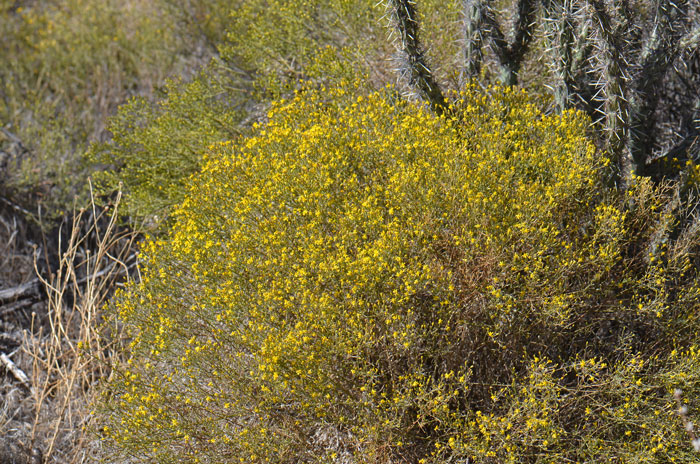
Scientific Name: Gutierrezia serotina
Common Name: Late Snakeweed
Also Called:
Family: Asteraceae, Sunflower Family
Synonyms: (Gutierrezia california, Gutierrezia polyantha)
Status: Native
Duration: Perennial
Size: 6 inches (15 cm) to 1 foot (30 cm)
Growth Form: Subshrub; stems green (herbaceous) and sometimes woody at base; stems smooth or without hair (glabrous); plant profile mounded.
Leaves: Green, blade shape linear to thin (filiform); lower basal leaves are absent at flowering; leaves alternate; leaf edges or margins without teeth or lobes, smooth (entire).
Flower Color: Golden-yellow; single (solitary) heads or in clusters of 3 to 5; flower heads with both ray (4 to 9) and disk (8 or 10 to 12) florets; fruit is a cypsela with a rough pappus.
Flowering Season: April or May, and August through October with adequate monsoon rainfall.
Elevation: 1,000 to 4,000 feet (304-1,219 m)
Habitat Preferences: Lower and upper deserts, grasslands, Creosote (Larrea) flats, dry washes, pinyon-juniper communities in stony plains, mesas, and slopes.
Recorded Range: Late Snakeweed is rare in the United States where it is found only in central and southern Arizona.
North America & US County Distribution Map for Gutierrezia serotina.
North America species range map for Late Snakeweed, Gutierrezia serotina:
North American range map courtesy of Virginia Tech, Dept. of Forest Resources & Environmental Conservation
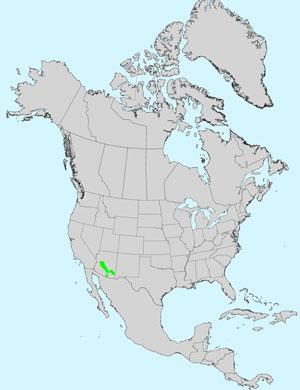
U.S. Weed Information: Unknown
Invasive/Noxious Weed Information: Unknown
Wetland Indicator: Unknown
Threatened/Endangered Information: Unknown
Genus Information: In North America there are 10 species and 11 accepted taxa overall for Gutierrezia. Worldwide, The Plant List includes 33 accepted species names and a further 30 scientific names of infraspecific rank for the genus.
The genus Gutierrezia was published in 1816 by Spanish botanist Mariano Lagasca y Segura, Director of the Real Jardin Botanico. Mariano Lagasca y Segura published the genus Gutierrezia in 1816.In the Southwestern United States: Arizona has 6 species of Gutierrezia, California and Utah each have 3 species, Nevada has 2 species, New Mexico has 5 species and Texas has 4 species. Data approximate and subject to revision.
Comments: Late Snakeweed is rare in the United States where it is found only in central and southern Arizona. There are no records of occurance in Mexico.
Snakeweeds of the genus Gutierrezia are often viewed negatively as evidenced in Arizona Flora, Kearney and Peebles; Gutierrezia are “worthless plants” not even valuable for controlling soil erosion and they are “more or less poisonous to sheep and goats when eaten in quantity, but are unpalatable and are seldom grazed”.
Many of the Snakeweeds looks similar, at least superficially, however Broom Snakeweed, Gutierrezia sarothrae and Threadleaf Snakeweed, Gutierrezia microcephala are both larger plants and both have other less noticeable differences in important key characteristics.
The genus Gutierrezia was published in 1816 by Spanish botanist Mariano Lagasca y Segura, Director of the Real Jardin Botanico. Mariano Lagasca y Segura published the genus Gutierrezia in 1816.
The species epithet “serotina” (serotin'a, seroti'num:) late in flowering or ripening; thus the common name Late Snakeweed.

